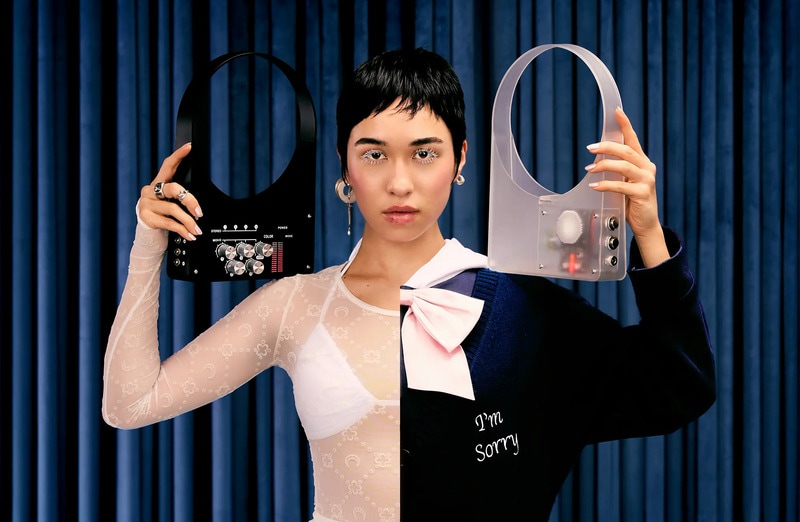The Feminine Pursuit of Swoleness - The Atlantic
You see it everywhere: A narrative of progress in two snapshots—before and after—that leaves the viewer to imagine what came in between. On the left, a body whose inhabitant is unhappy with it in some way. On the right, the same body but different, and—you’re meant to understand—better.
On diet culture’s greatest-hits album, the “before and after” is the lead single, an earworm that’s hard to get out of your mind. Even when it’s not being used explicitly to sell something (a meal regimen, a workout program), this diptych carries a promise that through the application of effort, you too can chisel yourself into a (supposedly) more appealing shape, which usually, but not always, means a smaller one.
Casey Johnston’s new book, A Physical Education, tells a before-and-after story, too—one not of shrinkage but of growth, physical and otherwise. Johnston traces her journey from a life of joyless distance running, which she saw as “taking out bigger and bigger cardio loans to buy myself more calories,” to the revelation of weight lifting. Her book incorporates memoir, science writing, and cultural critique, offering a technical breakdown of the effects of Johnston’s time in the gym, as well as condemnations of diet culture’s scams and hucksters. The book is not a how-to, but more of a why-to: Strength training, in Johnston’s telling, reframes both body and mind. Before lifting, “I knew all the contours of treating myself like a deceitful degenerate, against whom I must maintain constant vigilance,” she writes. After lifting, “all of the parts of myself that had been fighting each other” had become “united in the holy cause of getting strong as hell.”
Johnston has been evangelizing and explaining weight lifting online for years, first with her “Ask a Swole Woman” online column and then with her independent newsletter, She’s a Beast, along with a beginner’s lifting-training guide, Liftoff: Couch to Barbell. Like any hobby, weight lifting generates plenty of online material, but much of it is aimed at an audience that already knows its way around a squat rack. Johnston stands out for her attunement to the needs and anxieties of true beginners—particularly those who are women, for whom pumping iron often requires a certain amount of unlearning.
Even after the rise of body positivity, women are still frequently confronted with unsolicited promotion for crash diets, told that “nothing tastes as good as skinny feels,” and sold what Johnston calls “busywork bullshit” exercises—“Target love handles with these 10 moves”; “20 minutes to tone your arms”; etc.—designed to spot-treat so-called problem areas. Social media has supercharged the delivery of these messages; though there are plenty of supportive communities online, for every body-positive influencer, there seems to be another pushing food restriction and punishing workouts. The TikTok trend of “girl dinner” suggests that eating nothing but a plate of cheese cubes and almonds is an adorably feminine quirk rather than a repackaged eating disorder.
Read: The body-positivity movement is over
Johnston writes that since the age of 12, she’d been worrying about her weight, having internalized the message that “either I was small enough (and always getting smaller), or I was a disappointment.”
This is the message that fueled my workouts for the longest time, too—that the point of exercise was weight loss or, at the very least, staving off weight gain. Working out was a chore or—even worse—torturous penance for failing to become the impossible ever-shrinking woman. It wasn’t supposed to feel good; it definitely wasn’t fun. After berating myself to go to the gym in the first place, I would pedal away on the elliptical for 30 to 40 minutes until I tasted blood in the back of my throat (seems fine and normal), and then perform a grab bag of whatever calisthenics might plausibly target my core, hating every second of it. None of this changed the fact that I would get winded walking up a flight of stairs, or nearly buckle under the weight of my carry-on while hoisting it into an airplane’s overhead bin.
Eventually, seeking a less resentful relationship with exercise and my body, I dove into martial arts for several years, then decided to give weight lifting a try. Johnston’s writing was a guide for me; I loosely followed her Liftoff program when I was getting started, and have been a regular reader of her newsletter. It turned out that picking up something heavy for a few sets of five reps, sitting down half the workout, and then going home and eating a big sloppy burger did far more to make me feel comfortable in my body than gasping my way through endless burpees and rewarding myself with a salad ever did.
Johnston’s assertion that lifting “completely changed how I think and feel about the world and myself and everything” sounds like another of the fitness industry’s wild overpromises. But I know what she means. I, too, have found that lifting can transform the way you relate to your body.
First and foremost, Johnston explains, it inverts what women are still too-often told about the goal of exercise. It builds up instead of whittling away; it favors function over aesthetics. Weight lifting makes you better at more than just lifting weights. Johnston writes about struggling with a 40-pound bag of cat litter before she began lifting; now she simply picks it up and carries it into her apartment. As I added weight to the barbell, I felt my muscles stabilize; the neck and back pain from my butt-sitting job faded; I stopped needing help with my overstuffed suitcases; and I even started walking differently—no longer flinging my skeleton around, but smoothly engaging actual muscles. When I do cardio, running is easier too.
Read: The protein madness is just getting started
Here’s another thing: You gotta eat. It won’t work if you don’t. When Johnston crunched the numbers on how many calories her body would need to build muscle, she discovered that the 1,200-calorie diet she’d been living on for years was not going to cut it. For the lifting to do anything, she’d need to eat more. Like, a lot more. Protein, especially.
Going from a mindset of restriction to making sure that she was eating enough shifted how Johnston felt in her body. She had more energy; she was no longer constantly cold. She felt like “a big, beautiful horse.” As for me, before lifting, I had never so viscerally felt the obvious truth that food is fuel, that what and how much I eat shapes what my body can do and how it feels.
Yet even these discoveries cannot always overcome the influence of diet culture. When Johnston starts to allow herself more calories, at first she fears “the worst fate that could befall a woman who bravely ate more: gaining three, or even five, pounds.” The most heartbreaking scene in the book illustrates how difficult it can be to put your weapons down after a lifetime of treating your body like the enemy. Johnston tries to spread the good word of weight lifting to her mother, whom she describes as a perpetual dieter and a practiced commentator on any fluctuations in Johnston’s weight. It doesn’t go well. After they take a frustrating trip to the gym together, Johnston asks, “What is it you’re so afraid of?” Her mom replies that she doesn’t want to become “one of those fat old women” whom “no one likes.”
“I can think of lots of fat old women that many people love,” Johnston tries.
“But they wouldn’t love me.”
That’s the well I think so many of us are still trying to climb out of: the belief that a woman’s worth always lies in her desirability, that desirability takes only one shape, and that if she doesn’t live up to the impossible standard, she should at least be working apologetically toward correcting that.
Even if you think you’ve made it out, the foot soldiers of diet culture are always looking to pull you back in. I’ve followed some lifting-related accounts on Instagram; the algorithm seems to have interpreted that as free rein to bombard me with reels of “weight-loss journeys,” “bodyweight exercises for hot girlies,” and the like. Every other celebrity seems to be on Ozempic now, and apparently, “thin is in” again. I admit I spiraled a little when I went up a size in all my clothes, even though I’d gotten bigger on purpose.
Rebecca Johns: A diet writer’s regrets
Lifting culture, too, has its trapdoors back into disordered thinking. As Lauren Michele Jackson points out in her review of A Physical Education for The New Yorker, the idea that focusing on strength frees you from being preoccupied with looks is naive. Weight lifting can come with its own set of metrics and obsessions: Eating enough protein and hitting your macros can replace calorie restriction; instead of fixating on thinness, perhaps now you want a juicy ass or rippling biceps. The practice can be fraught in a different way for men, who are told that maximal swoleness is their optimal form. The same activity can be a key or a cage, depending on your point of view.
But weight lifting has stuck, for me and I think for Johnston, because it can also change the way one thinks about achievement. It serves as a pretty good metaphor for a balanced approach to striving that eschews both the Lean In–girlboss hustle and its “I don’t dream of labor” anti-ambition backlash. Not running until your tank is empty and then running some more, but rather fueling yourself enough to push just a bit further than you have before. Letting the gains accumulate slowly, a little more weight at a time. And most important, learning that rest is part of the rhythm of progress. You punctuate your workouts with full days off. You do your reps, and then you just sit there for a couple of minutes. You work, and then you recover.
While I’m resting, I often eat sour candies out of a fanny pack. I saw some powerlifters on Instagram eating candy before tackling a big lift—the idea being that the quick-metabolizing sugary carbs give you a little boost of energy. I don’t care if this is scientifically sound. (I’m serious, don’t email me.) I’m more excited to work out when I know that it’s also my candy time. The gym has morphed from a torture chamber to a place of challenge, effort, rest, and pleasure, all of which, it turns out, can coexist.
And failure is part of the mix, too. As Johnston writes, “Building strength is about pressing steadily upward on one’s current limits”; if you’re doing it right, your attempts will sometimes exceed your ability. That’s how you know you’re challenging yourself enough.
Sometimes failure involves gassing out on an attempt to squat heavier than you have ever squatted, and sometimes it’s more like slipping on the banana peel of an old, unhealthy thought pattern. Both will knock you on your ass for a bit. But that’s part of it. “Progress could be about going backward, letting go,” Johnston writes. “Before and after” images are only snapshots. Outside the frame, the body, and the self, keep evolving.
When you buy a book using a link on this page, we receive a commission. Thank you for supporting The Atlantic.






:max_bytes(150000):strip_icc()/Parents-FamilyWatch74-4cd556527fd847649fe8cb23836ab45a.jpg)


